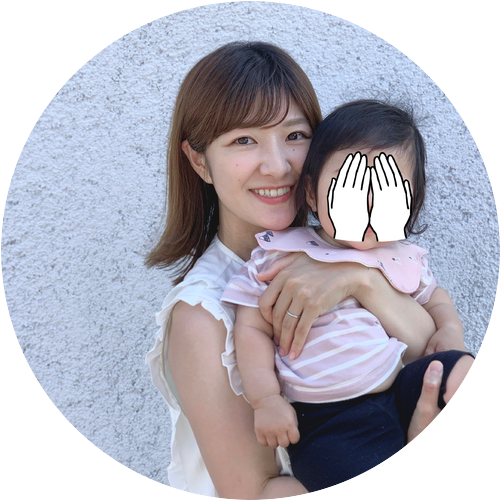【歯科英語記事】Study shows how remote monitoring can reduce orthodontic check-up frequency
こんにちは、歯科衛生士・ママライターのミホです。今回は歯科英語記事です。
いろいろあって英語を学び始めたので、勉強と備忘録も兼ねて読んだ記事の全文と日本語訳を載せていきます。今日の記事テーマは以下の通り。
「歯列矯正のリモートモニタリングにより、歯列矯正中の対面診療の回数を大幅に減らせることがわかった」という研究についてです。もちろん治療の質を下げずに、です。
記事全体の要約
記事全体をまとめると、以下のような内容です。
いまの歯科医療において注目すべきトレンドの1つ、「リモートモニタリングによる歯列矯正」。おおまかには、歯列矯正患者が自分で自身の歯列をスキャンし、その画像を歯科医師にデータで送りチェックを受けるという技術である。
マウスピース矯正とこれを組み合わせることで、治療の質を下げずに対面診療の回数を大幅に減らせることが、UAEの研究者とオーストラリアの歯科医師の共同研究によりわかった。
記事全文・日本語訳
この記事は以下のような構成から成っています。
- 【要約】ある研究で、リモートモニタリング技術により歯列矯正中の対面診療の回数を大きく減らせることがわかった
- 【研究の説明】研究が行われた場所・目的
- 【研究の説明】研究の進め方(グループの分け方)について
- 【結論・考察】リモートモニタリングを行なったグループとそうでないグループで、歯の移動に臨床的に重要な差は無かった
- 【結論・考察】リモートモニタリングを行なったグループの平均治療期間はコントロールグループより短く、対面診療の予約数も少なかった
- 【結論・考察】この研究の問題点
①【要約】ある研究で、リモートモニタリング技術により歯列矯正中の対面診療の回数を大きく減らせることがわかった
DUBAI, UAE/SYDNEY, Australia: One of the most notable trends in dentistry in 2021 has been the continued rise in popularity of remotely monitored orthodontics. New technologies have emerged that allow orthodontic patients to scan their own dentition and send the resulting images to a dental professional in lieu of a physical check-up. A study has now found that combining clear aligners with a popular remote monitoring tool could significantly reduce the number of in-person visits an orthodontic patient needs—without compromising the treatment outcome.
ドバイ(アラブ首長国連邦)/シドニー(オーストラリア)。2021年の歯科医療における最も注目すべきトレンドの1つは、遠隔監視(リモートモニタリング)による歯列矯正の人気が引き続き高まっていることです。歯列矯正患者が自分の歯列をスキャンし、その画像を歯科専門家に送信することで、物理的な検診の代わりとする新しい技術が登場したのです。この度、ある研究により、クリアアライナーと人気の高い遠隔モニタリングツールを組み合わせることで、治療結果を損なうことなく、矯正患者が必要とする対面診療の回数を大幅に減らすことができると判明しました。
②【研究の説明】研究が行われた場所・目的
The research was conducted by researchers at the UAE’s European University College in partnership with Dr Vandana Katyal, an Australian orthodontist in private practice. The overarching purpose of the study was to measure the effect of pairing a course of Invisalign clear aligner treatment with the DentalMonitoring remote monitoring tool, which employs artificial intelligence.
この研究は、UAEのヨーロッパ大学カレッジの研究者が、オーストラリアで開業している矯正歯科医のVandana Katyal博士と共同で実施したものです。この研究の目的は、インビザライン・クリアアライナーの治療コースと人工知能を採用した、DentalMonitoringリモートモニタリングツールの組み合わせの効果を測定することでした。
③【研究の説明】研究の進め方(グループの分け方)について
A sample group of 90 clear aligner patients at Dr Katyal’s practice were selected for the study. Half of these patients underwent their scheduled treatment with the assistance of the DentalMonitoring software and saw the orthodontist for an in-person appointment once every 16 weeks on average; the other half formed a control group that generally saw Dr Katyal once every six to eight weeks. In accordance with the pre-established protocol, the control group changed aligners once every seven days. Although the same was recommended to the DentalMonitoring group, the authors noted that “this recommendation was dynamic”, since “the software instructed the patient whether or not to proceed with the next aligner or continue with the same aligner”.
Katyal博士の診療所で、90人のクリアアライナー患者のサンプルグループが研究のために選ばれました。これらの患者の半分は、デンタルモニターソフトウェアの助けを借りて予定された治療を受け、平均して16週間に一度、歯科矯正医に対面診察の予約を取りました。残りの半分は、通常6~8週間に一度Katyal博士に会うコントロールグループを形成していました。
コントロールグループは、事前に設定されたプロトコルに従って、7日に1回アライナーを交換しました。DentalMonitoringグループにも同様のことが推奨されましたが、著者らは、「ソフトウェアが次のアライナーに進むか、同じアライナーを続けるかを患者に指示する」ため、「この推奨は動的である」と指摘しています。
④【結論・考察】リモートモニタリングを行なったグループとそうでないグループで、歯の移動に臨床的に重要な差は無かった
Analysis of the overall results indicated that the average time to first refinement for the DentalMonitoring group was 1.7 months shorter than that of the control group and that there was no clinically important difference in the tooth movement achieved. “A possible explanation for this finding could be the more frequent and proactive monitoring” offered by the DentalMonitoring software, the authors noted.
全体の結果を分析した結果、DentalMonitoringグループはコントロールグループよりも最初のリファインメント(=改善を行うべきタイミング)までの平均時間が1.7ヶ月短く、達成された歯の移動に臨床的に重要な差はなかったことが示されました。この結果について、著者らは、DentalMonitoringソフトウェアが提供する「より頻繁で積極的なモニタリングが原因である可能性がある」と指摘しています。
⑤【結論・考察】リモートモニタリングを行なったグループの平均治療期間はコントロールグループより短く、対面診療の予約数も少なかった
The average total treatment time for patients in the DentalMonitoring group was also less than that for the control group, 12.2 months compared with 14.0 months. In addition, patients in the DentalMonitoring group had an average of 3.5 fewer in-person appointments than the control group had over the treatment duration—a finding that was primarily a function of the “increased monitoring and communication with patients” enabled by the software, the authors remarked.
また、DentalMonitoringグループの患者の平均治療期間は、コントロールグループの 14.0 ヶ月に対して 12.2 ヶ月と、コントロールグループより短かった。さらに、DentalMonitoringグループの患者は、治療期間中、コントロールグループよりも対面での予約が平均3.5回少なかった。この結果は、主にソフトウェアによって可能になった「患者とのモニタリングとコミュニケーションの増加」の機能であると著者らは述べている。
⑥【結論・考察】この研究の問題点
“This study is the first to focus on the clinical application and performance of remote monitoring, and several limitations are apparent,” the authors wrote in their conclusion. Among these limitations were the inherent bias due to the study’s retrospective nature, the question of its external validity given that it was conducted entirely in one private dental practice and the consideration that the DentalMonitoring software, by requiring patients to take regulars scans of their orthodontic progress, could be viewed as a form of reminder therapy, “which has been shown to be effective at improving compliance,” the authors explained. “Therefore, additional studies are required to support our findings.”
「本研究は、リモートモニタリングの臨床応用と性能に焦点を当てた最初の研究であり、いくつかの限界があることは明らかである」と著者らは結論で述べている。これらの限界の中には、研究のレトロスペクティブな性質による固有のバイアス、完全に1つの民間歯科診療所で実施されたことを考慮した外部妥当性の疑問、DentalMonitoringソフトウェアが、患者に矯正の進捗状況を定期的にスキャンすることを義務付けることによって、リマインダー療法の一形態と見なすことができ、「コンプライアンスの改善に有効であることが示されている」と、著者らは説明しました。"したがって、我々の発見を支持するために、さらなる研究が必要である。"
記事の引用元
記事は以下で参照しました。


